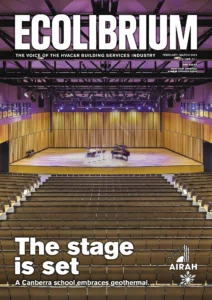Mind the gap

The federal government has taken concrete action to address gender equity with the Closing the Gender Pay Gap Bill, writes Mark Vender.
In building and construction, and in HVAC&R in particular, the heavily male‑dominated nature of the sector and the need to make it more diverse and inclusive are often discussed.
Another aspect of gender equity that is now gaining attention is the discrepancy in salaries, also known as the pay gap.
According to the Workplace Gender Equality Agency (WGEA), Australia’s national gender pay gap is 14.1 per cent.
As of May 2022, women in Australia earned $263.90 less than men each week. Or to put this another way, the average Australian woman has to work an extra 61 days a year to earn the same pay as the average Australian man.
In the construction sector, the pay gap is higher than the national average, at 18.8 per cent. And it is getting worse – up from 16.6 in 2021.
To address this issue, the federal government has introduced the Workplace Gender Equality Amendment (Closing the Gender Pay Gap) Bill 2023 into parliament. It brings important changes to the existing Workplace Gender Equality Act.
At the moment, WGEA only provides industry average data on pay gaps. From 2024, it will publish gender pay gaps of employers with 100 or more workers, shifting the responsibility for action from the industry to individual companies.
The Women of AIRAH STG has organised a special event in Sydney on March 8 – International Women’s Day – to explore these changes and their implications, featuring keynote speaker Rachel Howard.
For more information and to register, go to www.airah.org.au/events

This article appears in Ecolibrium’s February-March 2023 edition
View the archive of previous editions
Latest edition
See everything from the latest edition of Ecolibrium, AIRAH’s official journal.





